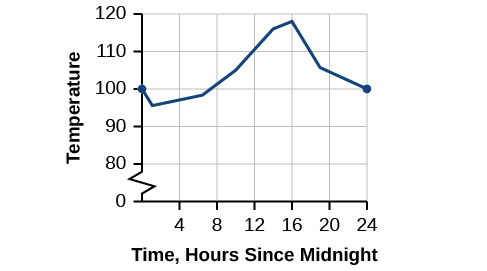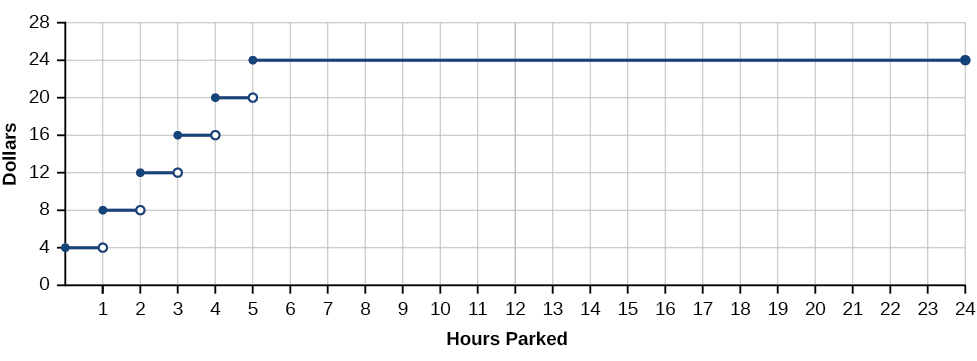| << Chapter < Page | Chapter >> Page > |
Arizona is known for its dry heat. On a particular day, the temperature might rise as high as and drop down only to a brisk [link] shows the function where the output of is the temperature in Fahrenheit degrees and the input is the time of day, using a 24-hour clock on a particular summer day.

When we analyze this graph, we notice a specific characteristic. There are no breaks in the graph. We could trace the graph without picking up our pencil. This single observation tells us a great deal about the function. In this section, we will investigate functions with and without breaks.
Let’s consider a specific example of temperature in terms of date and location, such as June 27, 2013, in Phoenix, AZ. The graph in [link] indicates that, at 2 a.m. , the temperature was . By 2 p.m. the temperature had risen to and by 4 p.m. it was Sometime between 2 a.m. and 4 p.m. , the temperature outside must have been exactly In fact, any temperature between and occurred at some point that day. This means all real numbers in the output between and are generated at some point by the function according to the intermediate value theorem,
Look again at [link] . There are no breaks in the function’s graph for this 24-hour period. At no point did the temperature cease to exist, nor was there a point at which the temperature jumped instantaneously by several degrees. A function that has no holes or breaks in its graph is known as a continuous function . Temperature as a function of time is an example of a continuous function.
If temperature represents a continuous function, what kind of function would not be continuous? Consider an example of dollars expressed as a function of hours of parking. Let’s create the function where is the output representing cost in dollars for parking number of hours. See [link] .
Suppose a parking garage charges $4.00 per hour or fraction of an hour, with a $25 per day maximum charge. Park for two hours and five minutes and the charge is $12. Park an additional hour and the charge is $16. We can never be charged $13, $14, or $15. There are real numbers between 12 and 16 that the function never outputs. There are breaks in the function’s graph for this 24-hour period, points at which the price of parking jumps instantaneously by several dollars.

A function that remains level for an interval and then jumps instantaneously to a higher value is called a stepwise function . This function is an example.
A function that has any hole or break in its graph is known as a discontinuous function . A stepwise function, such as parking-garage charges as a function of hours parked, is an example of a discontinuous function.

Notification Switch
Would you like to follow the 'Precalculus' conversation and receive update notifications?